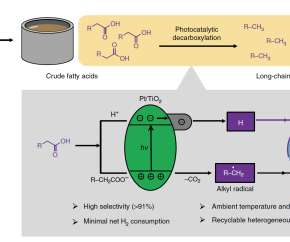Researchers propose testing standards for particulate photocatalysts in solar fuel production
Green Car Congress
FEBRUARY 8, 2021
In this regard, photocatalytic water splitting has attracted significant interest as a cost-effective means to convert sustainable solar energy into valuable chemicals. LI Rengui from the Dalian Institute of Chemical Physics (DICP) of the Chinese Academy of Sciences (CAS), in collaboration with Prof. A research team led by Prof.






















Let's personalize your content